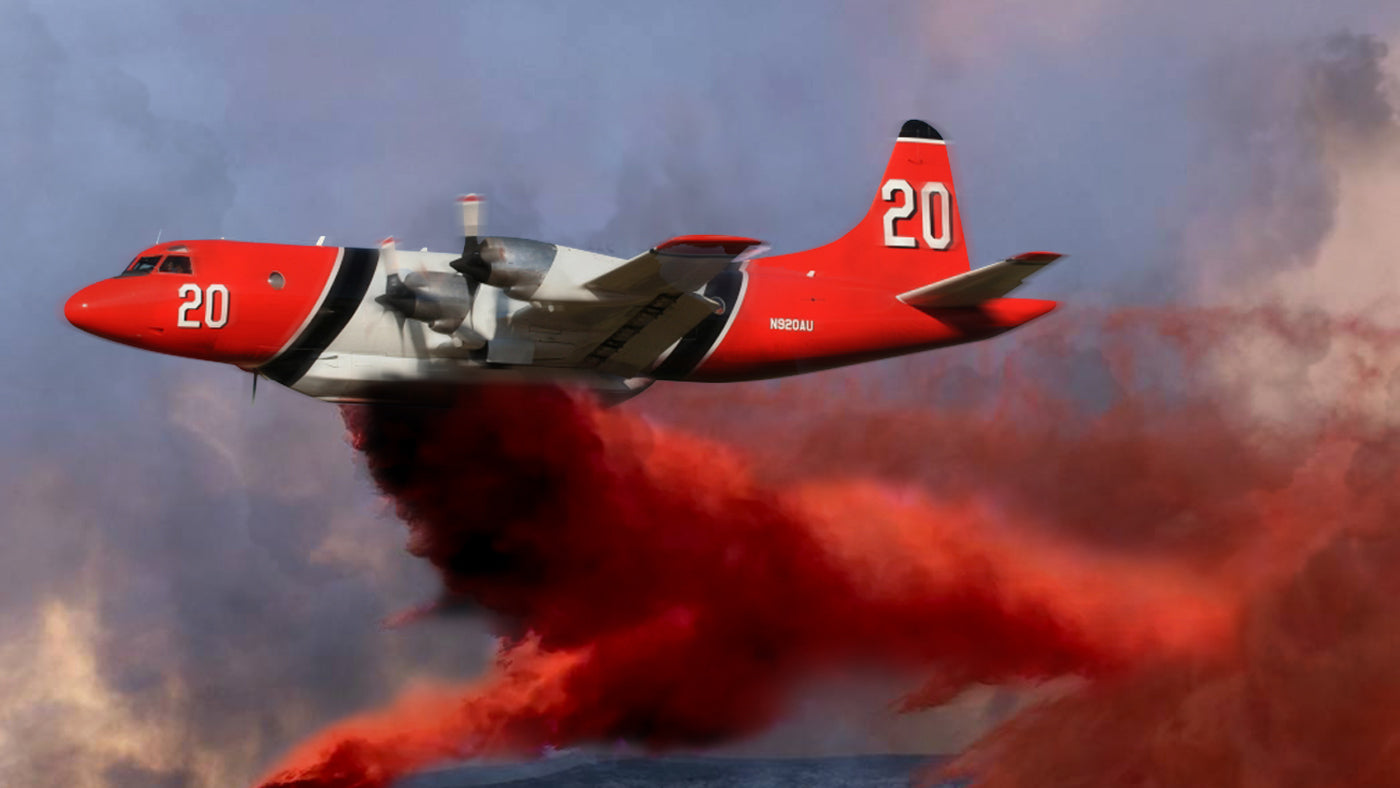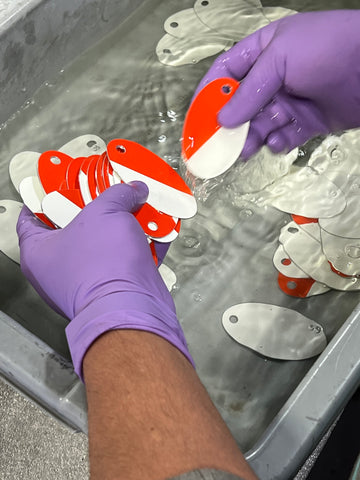
- by Dianna Lopez
P-3 Orion: Mission Ready For Over Sixty Years
- by Dianna Lopez
A question? Visit our contact page
This site uses cookies for better user experience and analytics.

The P-3 Orion is one of the most asked for planes MotoArt receives requests for and it’s no wonder. The P-3 has been in service for 60 years, and has proven itself as reliable and versatile in its many applications in countries all over the world. Read more about the P-3 Orion and N920AU, then get one for your collection when they are released on Thursday, December 15, 2022 at planetags.com.

P-3C Orion, NAS North Island, Calif. (January 30, 2003)
030130-N-0226M-002 flickr photo by mashleymorgan shared under a Creative Commons (BY-SA) license
The Lockheed P-3 Orion is a land-based, long range, four-engined turboprop aircraft developed for anti-submarine warfare, for the U.S. Navy during the 1960s. Its design was based on Lockheed’s commercial airliner the L-188 Electra. A noticeable difference is the extended tail boom equipped with MAD (magnetic anomaly detection) to detect submarines. It also features an internal bomb bay below the front fuselage and under wing pylons, to allow for a variety of armament including the AGM-84 Harpoon and other missiles, rockets, mines, and gravity bombs.

P-3C VP-45 flickr photo by Rob Schleiffert shared under a Creative Commons (BY-SA) license
The P-3 is still used today, 60 years after its introduction, in many different missions by countries all over the world. According to Lockheed Martin, they are used for multiple missions.
Take a look at Lockheed's P-30 Orion 50th Anniversary video, from 2012, with history and information about the enduring maritime patrol aircraft.

The first (aerodynamic) prototype of the Lockheed P3V Orion (after 1962 P-3) in flight in 1958. It clearly shows its origin from the Lockheed Electra airliner. USN - U.S. Navy Naval Aviation News January 1959 - Public Domain photo
Development of the P-3 began in August 1957, when the U.S. Navy asked for proposals for a replacement for the Lockheed P2V Neptune and the Martin P-5 Martin. They needed a more advanced aircraft for maritime patrol, especially for anti submarine warfare (ASW). By modifying their Electra, which was still in development, they would be able to save money and integrate more quickly. Lockheed was awarded a research and development contract in May 1958. The first prototype was YP3V-1/YP-3A (BuNo 148276), created from the third Electra airframe. Its first flight was in August 1958. The first production P-3, P3V-1, was introduced in April 1961. Deliveries began in August 1962. It was renamed the P-3 Orion in September 1962, when the U.S. military began their unified designation system in naming aircraft.
The P-3 Orion has had several developments, including a conversion from analog to digital between the P-3B and P-3C variants. After civilian Electras were involved in fatal accidents in 1959 and 1960, the FAA investigated and found that two of the three crashes were due to weak engine mounts that could ultimately cause the wings to pull off the aircraft. Lockheed introduced the Lockheed Electra Achievement Program, which strengthened the engine mounts and wings. Because of the longevity of the aircraft’s service, Lockheed, as part of their Service Life Extension Program, continues to support it with efforts such as the Mid-Life Upgrade Program.
Just three months after receiving the first P-3 Orion, U.S. Navy Patrol Squadron 8 was deployed to Bermuda on October 23, 1962, in the midst of global intrigue. Aircrews from VP-8 and VP-44 began enforcing the U.S. embargo against Cuba, preventing the Soviet Union from bringing military supplies, including intermediate range ballistic missiles and missile launch support equipment, into Cuba.

P-3 Orions patrolled the Atlantic Ocean to locate and track Soviet cargo ships. A VP-44 crew famously flew close surveillance over the Soviet freighter Anosov, which had refused to uncover the large objects attached to its deck and had turned back to return to the Soviet Union. The P-3 Orion crew verified that the these eight large oblong objects were indeed crated missiles.
 Photo by Louis DePaemelaere One Mile High Photography. Used with permission.
Photo by Louis DePaemelaere One Mile High Photography. Used with permission.
The P-3 Mid Life Upgrade Program (MLU) is a life extension kit which replaces the plane’s outer wings, center wing lower section, and horizontal stabilizer with new production components. This removes the current airframe flight restrictions, and gives the aircraft 15,000 additional flight hours. It replaces all fatigue-life-limiting structures with new enhanced design components as well as improved corrosion-resistant materials. MLU is a certified, cost effective solution that extends the P-3’s service life and allows it to be ready for decades to come.

Photo by Louis DePaemelaere One Mile High Photography. Used with permission.
Seven aircraft (six P-3As and 1 P-3B) were converted to aerial fire fighters for Aero Union during the early 1990s. They were fitted with a 3,000 gallon retardant tank. Aero Union operated aerial firefighting aircraft, as contractors of the U.S. Forest Service, including the Aerostar. Aero Union was founded in 1960 and made custom firefighting systems, provided training crews and operated a number of different converted military aircraft in air firefighting. Their USFS contract was terminated in 2011 due to safety concerns, and their doors were shuttered permanently 2 weeks later.
 Photo by Louis DePaemelaere One Mile High Photography. Used with permission.
Photo by Louis DePaemelaere One Mile High Photography. Used with permission.

 Photo by Louis DePaemelaere One Mile High Photography. Used with permission.
Photo by Louis DePaemelaere One Mile High Photography. Used with permission.
N920AU, construction number 185-5039 (150513), was built in 1963 and delivered to the U.S. Navy. 150513 served with VP-68, a Patrol Squadron of the U.S. Navy Reserve. Established in November 1970 at NAS Patuxent River, Maryland, and later the Naval Air Facility Washington D.C., the Black Hawks' mission was to "attain and maintain the highest possible personnel and material readiness for immediate employment in the event of war or national emergency and to perform Peacetime Contributory Support as an integral part of the total force." They operated five Lockheed P-3 Orions for training and operational missions in support of fleet operations in the Atlantic, Mediterranean, Caribbean Seas, and the Gulf of Mexico. The squadron was disestablished in January 1997, after 26 years of service.
In 1979, this P-3, now named P-3.06, was delivered to the Spanish Air Force (Ejercito de Aire). Read more about VP-68 history, and this story about 150513 on VPNavy.com.
"...In late 79 VP-68 was tasked to turn over BUNO: 150513 to the Spanish Navy. It had been our official "bounce bird" for quite a while, and was a Non-Difar A model, or "Iron Bomber" to some, so we trons were not keeping it ASW ready because all the gear had been superseded. ...They took old 150513 and their bird and launched back to Spain. About two days later a guy that had been on ramp watch came up to me and said, "Those Spanish guys sure worked late the other night, they came back after you secured and they were swapping gear from their bird to 513 all night long trying to troubleshoot the ASW problems." We'd been had..."
By 1990, according to aerialvisuals.ca, it was retired from Spanish military service and back in the States. It changed hands a few more times, including a stint as an instructional airframe at the State Technical College Aviation Maintenance School, Abilene Airport, TX.

In 2001, it was bought by Aero Union Corporation, in Chino, California, registered as N920AU, and converted to a firefighting tanker. As “Tanker 20”, N920AU battled fires until Aero Union’s doors were closed in 2011, then was broken up in Halifax, Nova Scotia. Its fuselage landed at United Aeronautical Corp in 2013, where it remained for almost a decade. MotoArt acquired what remained of it in 2022.

Photo by Louis DePaemelaere One Mile High Photography. Used with permission.
MotoArt owner Dave Hall was ecstatic to find this P-3 in nearby Tucson, AZ. "We’ve been wanting to work with this P-3 since we discovered it at United Aero in Tucson, Arizon," says Hall. "In the last twenty years with MotoArt, the P-3 Orion has been one of our most requested Tags. We are honored to finally add it to our PlaneTag collection. "
Here are some photos of N920AU from the MotoArt team.






These photos were taken at MotoArt Studios in Torrance, California, where PlaneTags are manufactured.








The newest PlaneTags from MotoArt promise to be a highlight of what has been a year full of fantastic releases. They will be released on the PlaneTags app and website this Thursday, December 15, 2022 at 12 noon Pacific Time. Sign up for email and SMS notifications, news and exclusives. Don't miss this release.

It almost goes without saying that our most popular Lockheed PlaneTags have been the First and Second editions of the SR-71 PlaneTags, which have completely sold out. We also introduced a Lockheed C-130, which has also sold out.
Check out the other Lockheed aircraft we have tagged in the past and get one for your collection before they are gone. As of this writing, these PlaneTags are still available.
A special thank you to Louis DePaemelaere One Mile High Photography for generously allowing us to use his original photos of N920AU in Aero Union colors. The photos were taken in 2006 at Grand Junction Walker Field, Colorado
From Warbird to Water Bomber: The Epic Life of the Hawaii Mars
In the world of aviation, few aircraft have lived a life as large, or as long, as the Hawaii Mars. Towering over most of its contemporaries with a wingspan of 200 feet, this mighty flying boat was born in the final days of World War II, then quietly transformed into one of the most iconic aerial firefighting aircraft the world has ever seen. From military transport to firefighting titan, the Hawaii Mars represents one of aviation’s most extraordinary second acts.
In 2025, MotoArt obtained an original wing of this aircraft and created special PlaneTags, made exclusively for the Martin family members and Mars workers. On December 11, 2025, Hawaii Mars PlaneTags will be available to the general public for the first time.
F-14 Tomcat Coasters: A Legendary Fighter Reimagined for Your Home
Few aircraft define an era quite like the Grumman F-14 Tomcat. Sleek, powerful, and unmistakably iconic, the Tomcat was the Navy’s premier fleet defense fighter for more than three decades. From Cold War missions to pop culture stardom, the F-14 remains one of the most recognizable and beloved aircraft ever built. Today, MotoArt is proud to introduce the F-14 Tomcat Coaster Set, created from authentic F-14 aircraft material.
PR-AJB: The Story of an Azul Airbus A320 With a Global Journey
Every airplane has a story, and some travel farther than others before their flying days are over. PR-AJB was one of those well-traveled aircraft. This Airbus A320 started its life flying British families on long-awaited holidays, then later crossed the Atlantic to join the growing fleet of Azul Linhas Aéreas Brasileiras. Over nearly nineteen years it picked up new registrations, new paint, new routes and a new home, carrying thousands of passengers along the way.
Its journey reflects how widely the A320 family has spread around the world and how easily these aircraft adapt to whatever their next chapter requires. PR-AJB also arrived at Azul during an important period of expansion as the airline worked to connect more cities across Brazil. In this blog we will explore where the aircraft came from, what it did during its short time with Azul, and how it eventually came to rest in Florida. We will also share how MotoArt recovered material from the retired airframe and created PlaneTags so its story can continue in a new way.


Share:
PlaneTags for Pets: Pet ID Tags From Aviation Giants
P61: A Black Widow Becomes A Midnight Queen